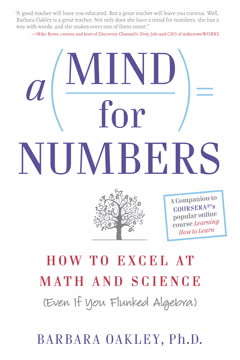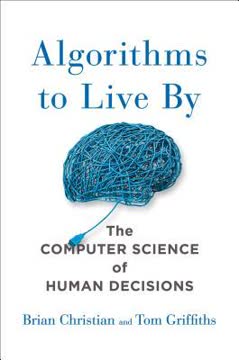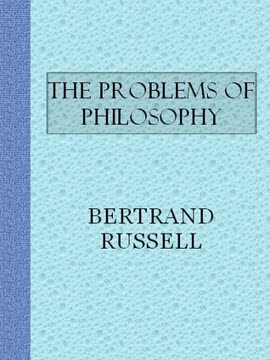نکات کلیدی
1. ریاضیات بازی الگوها و ارتباطات شگفتانگیز است
ریاضیات یک شوخی است.
الگوها در اعداد. دنیای ریاضیات پر از الگوها و ارتباطات غیرمنتظره است. از شیوع شگفتانگیز قانون بنفورد در مجموعه دادههای طبیعی تا دنباله فیبوناچی در طبیعت، ریاضیات نظم پنهانی را در پدیدههای ظاهراً تصادفی آشکار میکند. این الگوها فراتر از ریاضیات محض به حوزههای مختلفی از جمله فیزیک، زیستشناسی و حتی علوم اجتماعی گسترش مییابند.
ارتباطات شگفتانگیز. مفاهیم ریاضی اغلب کاربردهای شگفتانگیزی در رشتههای متنوع دارند:
- مقاطع مخروطی که توسط یونانیان باستان مطالعه شدهاند، در فیزیک و مهندسی مدرن حیاتی هستند
- اعداد مختلط که زمانی صرفاً انتزاعی تلقی میشدند، اکنون در مکانیک کوانتومی اساسی هستند
- مفهوم رشد نمایی در زمینههایی به تنوع بهره مرکب، دینامیک جمعیت و گسترش ویروس کاربرد دارد
ریاضیات به طور مداوم قدرت خود را در یکپارچهسازی مفاهیم ظاهراً نامرتبط و ارائه بینشهایی در مورد ماهیت بنیادی واقعیت نشان میدهد.
2. فراگیری قوانین توانی در طبیعت و سیستمهای انسانی
اصطلاح آماری رایج "دم بلند" اغلب به عنوان یک استعاره برای یک هذلولی و مجانب آن استفاده میشود.
قوانین توانی در سیستمهای متنوع. قوانین توانی، روابط ریاضی که در آن یک کمیت به عنوان توان دیگری تغییر میکند، با فراوانی شگفتانگیزی در سیستمهای طبیعی و ساخته دست بشر ظاهر میشوند. این قوانین پدیدههایی از توزیع ثروت (اصل پارتو) تا فراوانی کلمات در زبان (قانون زیف) را توصیف میکنند.
نمونهها و پیامدها:
- اندازه شهرها: جمعیت شهرها اغلب از توزیع قانون توانی پیروی میکند
- بزرگی زلزلهها: فراوانی زلزلهها به صورت نمایی با بزرگی آنها کاهش مییابد
- اتصال اینترنت: تعداد لینکها به وبسایتها از یک قانون توانی پیروی میکند
- شبکههای اجتماعی: تعداد ارتباطاتی که افراد دارند اغلب از یک قانون توانی پیروی میکند
فراوانی قوانین توانی نشاندهنده اصول جهانی زیربنایی است که سیستمهای پیچیده را کنترل میکنند. درک این قوانین میتواند بینشهایی در مورد رفتار سیستمها ارائه دهد، نتایج را پیشبینی کند و تصمیمگیری را در زمینههایی به تنوع اقتصاد، برنامهریزی شهری و ارزیابی ریسک اطلاعرسانی کند.
3. تأثیر عمیق هندسه بر درک ما از جهان
مثلثها بعدها برای اندازهگیری فواصل بسیار بزرگتر از ارتفاع یک هرم استفاده شدند و بدین ترتیب علوم نجوم، ناوبری و نقشهبرداری را متحول کردند.
از حکمت باستان تا علم مدرن. هندسه، مطالعه اشکال و فضاها، در پیشرفت درک ما از جهان بنیادی بوده است. از اندازهگیری هرم بزرگ توسط تالس تا قوانین حرکت سیارات کپلر، اصول هندسی به طور مداوم ابزارهای قدرتمندی برای کشف علمی فراهم کردهاند.
مشارکتهای کلیدی هندسه:
- مثلثبندی: استفاده شده در نقشهبرداری، ناوبری و فناوری GPS
- مقاطع مخروطی: ضروری در درک مدارهای سیارهای و حرکت پرتابه
- هندسه نااقلیدسی: حیاتی در نظریه نسبیت عام اینشتین
هندسه همچنان نقش حیاتی در فیزیک مدرن، کیهانشناسی و فناوری ایفا میکند. اصول آن زیربنای همه چیز از طراحی تلسکوپها تا الگوریتمهای مورد استفاده در گرافیک کامپیوتری و هوش مصنوعی است.
4. زیبایی و کاربرد اعداد موهومی
هویت اویلر "بودن یا نبودن" ریاضیات است، معروفترین خط در آثار و میراث فرهنگی که فراتر از حوزه خود طنینانداز میشود.
فراتر از واقعیت. اعداد موهومی، بر اساس جذر -1، در ابتدا به عنوان یک کنجکاوی ریاضی به نظر میرسیدند. با این حال، آنها نه تنها در خواص انتزاعی خود زیبا بلکه در کاربردهای دنیای واقعی نیز بسیار مفید بودهاند.
کاربردهای اعداد موهومی:
- مهندسی برق: ضروری در درک جریان متناوب
- مکانیک کوانتومی: اساسی برای توصیف حالات کوانتومی
- پردازش سیگنال: استفاده شده در تحلیل و دستکاری سیگنالهای دیجیتال
- نظریه کنترل: مهم در طراحی سیستمهای کنترل پایدار
صفحه مختلط، که اعداد حقیقی و موهومی را ترکیب میکند، یک ابزار بصری و تحلیلی قدرتمند فراهم میکند. این امکان را برای راهحلهای زیبا به مسائل در فیزیک و مهندسی فراهم میکند که حل آنها با استفاده از اعداد حقیقی به تنهایی دشوار یا غیرممکن خواهد بود.
5. حسابان: زبان تغییر و انباشت
حسابان به نیوتن اجازه داد تا معادلهای را که موقعیت یک جسم را تعیین میکرد بگیرد و از آن معادله ثانویهای درباره سرعت لحظهای جسم ابداع کند.
مفاهیم بنیادی. حسابان، که به طور مستقل توسط نیوتن و لایبنیتس توسعه یافت، چارچوب ریاضی برای درک تغییر و انباشت فراهم میکند. دو شاخه اصلی آن، مشتقگیری و انتگرالگیری، ابزارهای قدرتمندی برای تحلیل سیستمهای دینامیک هستند.
کاربردهای کلیدی حسابان:
- فیزیک: توصیف حرکت، نیروها و انرژی
- مهندسی: بهینهسازی طراحیها و تحلیل سیستمها
- اقتصاد: مدلسازی رشد و حداکثرسازی سود
- زیستشناسی: درک دینامیک جمعیت و نرخ واکنش
حسابان پایه بسیاری از تکنیکهای ریاضی پیشرفته مورد استفاده در علم و مهندسی مدرن است. مفاهیم آن زیربنای همه چیز از مدلهای پیشبینی آب و هوا تا قیمتگذاری مشتقات مالی است.
6. قدرت قوانین ساده در تولید رفتارهای پیچیده
تنها با در نظر گرفتن نقشه یک بار به عنوان کد و یک بار به عنوان شیء بود که امکان حذف معمای جهنمی بازگشت بینهایت فراهم شد.
پیچیدگی ناشی از قوانین ساده. قوانین ساده، هنگامی که به صورت تکراری یا در سیستمهای بزرگ اعمال میشوند، میتوانند الگوهای پیچیده و اغلب زیبایی تولید کنند. این اصل در اتوماتای سلولی، فراکتالها و بسیاری از پدیدههای طبیعی نشان داده شده است.
نمونههایی از قوانین ساده که پیچیدگی تولید میکنند:
- بازی زندگی کانوی: یک اتوماتای سلولی با تنها چهار قانون که میتواند رفتار پیچیده و شبیه به زندگی تولید کند
- مجموعه ماندلبرو: یک الگوی فراکتال پیچیده که توسط یک معادله تکراری ساده تولید میشود
- سیستمهای L: استفاده شده برای مدلسازی رشد گیاهان و تولید گرافیکهای کامپیوتری واقعگرایانه
درک چگونگی ظهور پیچیدگی از سادگی پیامدهای عمیقی برای زمینههایی مانند هوش مصنوعی، زیستشناسی و اقتصاد دارد. این نشان میدهد که بسیاری از سیستمهای پیچیده در طبیعت و جامعه ممکن است توسط اصول زیربنایی نسبتاً ساده کنترل شوند.
7. اثباتهای ریاضی: از حکمت باستان تا پیشرفتهای مدرن
ریاضیات اغلب در مرز است و در مرز بهتر است دو متخصص، یکی از هر طرف، را بگیرید.
هنر استدلال دقیق. اثباتهای ریاضی پایه دانش ریاضی هستند و در دنیای عدم قطعیت اطمینان فراهم میکنند. از عناصر اقلیدس تا اثباتهای مدرن با کمک کامپیوتر، روشهای استدلال ریاضی تکامل یافتهاند در حالی که اصول اصلی خود را حفظ کردهاند.
جنبههای کلیدی اثباتهای ریاضی:
- اصول موضوعه: فرضیات بنیادی که از آنها حقایق دیگر استخراج میشوند
- استنتاج منطقی: فرآیند استدلال گام به گام
- تکنیکهای مختلف اثبات: اثبات مستقیم، اثبات با تناقض، استقراء و غیره
- اثباتهای با کمک کامپیوتر: امکان تأیید قضایای پیچیده
فرآیند توسعه و تأیید اثباتها نه تنها حقایق ریاضی را تثبیت میکند بلکه اغلب به بینشها و ارتباطات جدید بین حوزههای مختلف ریاضی منجر میشود. پیگیری اثباتها همچنان به پیشبرد تحقیقات ریاضی کمک میکند و گاهی اوقات به پیشرفتهایی منجر میشود که درک ما از جهان ریاضی را تغییر میدهد.
آخرین بهروزرسانی::
FAQ
1. What is The Grapes of Math by Alex Bellos about?
- Exploration of math in life: The book explores how mathematical concepts are deeply woven into everyday experiences, from natural phenomena to human behavior, making math accessible and engaging.
- Wide range of topics: Bellos covers a broad spectrum, including prime numbers, trigonometry, calculus, fractals, and cellular automata, connecting abstract ideas to real-world applications.
- Math as story and play: The author presents mathematics as both a playful game and a rigorous language, using stories, history, and puzzles to reveal the beauty and surprise in logical thought.
2. Why should I read The Grapes of Math by Alex Bellos?
- Accessible to all readers: The book assumes no prior mathematical knowledge, introducing concepts progressively and making them understandable for general audiences.
- Engaging storytelling: Bellos uses anecdotes, historical context, and interviews with mathematicians and mental calculators to make math relatable and entertaining.
- Broader perspective on math: Readers are encouraged to appreciate the patterns, surprises, and cultural meanings behind numbers, enhancing both understanding and enjoyment of the world.
3. What are the key takeaways from The Grapes of Math by Alex Bellos?
- Numbers have personalities: Numbers evoke feelings and cultural associations, influencing behavior and preferences in subtle ways.
- Cultural and psychological impact: The book explores how beliefs about numbers vary globally and how psychological studies reveal our processing of numbers.
- Math shapes perception: Bellos shows that mathematics is not just abstract but reflects and shapes our understanding of the world, from consumer choices to scientific discovery.
4. What are the best quotes from The Grapes of Math by Alex Bellos and what do they mean?
- "Mathematics is the science of patterns." This quote encapsulates the book’s central theme that math is about discovering and understanding patterns in nature, society, and thought.
- "Proofs are like jokes: they have a setup and a punch line." Bellos uses this analogy to highlight the joy and surprise in mathematical reasoning, where the "aha!" moment brings satisfaction.
- "Numbers are not just symbols, but characters with stories." This reflects the book’s exploration of the cultural and emotional significance of numbers in human life.
5. How does Alex Bellos in The Grapes of Math explain our emotional and cultural relationship with numbers?
- Numbers as characters: Bellos discusses how people develop personal attachments to favorite numbers and how numbers are seen as lucky, masculine, feminine, or calm.
- Cultural differences: The book examines global variations, such as the avoidance of 4 in East Asia and the preference for odd numbers in Japan.
- Numbers influence behavior: Studies cited show how numbers affect consumer choices, pricing, and even judicial decisions, demonstrating their subtle power in society.
6. What is Benford’s Law and how does The Grapes of Math by Alex Bellos explain it?
- Definition and discovery: Benford’s Law states that in many real-world data sets, smaller digits appear as the leading digit more frequently, with 1 appearing about 30% of the time.
- Historical context: The law was first noticed by Simon Newcomb and later formalized by Frank Benford, who found it held across diverse data sets.
- Mathematical explanation and use: The law is scale-invariant and arises from multiplicative growth; it is used in forensic accounting and fraud detection due to its predictive power.
7. What are power laws, Zipf’s Law, and Pareto’s Law as described in The Grapes of Math by Alex Bellos?
- Power laws overview: Power laws describe relationships where one quantity varies as a power of another, leading to "long tail" distributions with a few common or large items and many rare or small ones.
- Zipf’s Law: This law shows that word frequencies and city populations are inversely proportional to their rank, with the most common being vastly more frequent than the rest.
- Pareto’s Law: Also known as the 80/20 rule, it describes how a small percentage of people hold most of the wealth, illustrating the prevalence of power laws in social and natural systems.
8. How does The Grapes of Math by Alex Bellos explain the importance of triangles and trigonometry?
- Historical significance: Triangles were central to ancient Greek mathematics, enabling measurements of inaccessible heights and distances.
- Trigonometric ratios: The book explains sine, cosine, and tangent as essential tools for navigation, astronomy, and modern GPS technology.
- Triangulation and mapping: Bellos details how triangulation revolutionized cartography and was crucial in major surveys, such as the measurement of Mount Everest.
9. What are conic sections and why are they important according to The Grapes of Math by Alex Bellos?
- Definition and types: Conic sections are curves—circles, ellipses, parabolas, and hyperbolas—formed by slicing a cone at different angles.
- Applications in science and technology: Ellipses describe planetary orbits, parabolas are used in satellite dishes and headlights, and hyperbolas appear in physics and engineering.
- Historical development: The study of conics by Apollonius laid the groundwork for Kepler’s laws and Newtonian physics, linking geometry to celestial mechanics.
10. How does Alex Bellos in The Grapes of Math explain the circle constant tau (τ) and critique pi (π)?
- Critique of pi: Bellos presents arguments that pi, relating circumference to diameter, is less fundamental than tau, which relates circumference to radius.
- Introduction of tau (τ): Tau is defined as τ = 2π, and its use simplifies many mathematical formulas involving circles and rotations.
- Cultural and mathematical significance: Advocates like Michael Hartl promote tau for its clarity, and Bellos discusses its potential to better reflect the essence of circular geometry.
11. How does The Grapes of Math by Alex Bellos explain imaginary numbers, Euler’s identity, and the complex plane?
- Imaginary numbers introduction: Bellos traces the history and necessity of imaginary numbers, introducing the symbol i as the square root of -1.
- Euler’s identity: The book highlights Euler’s identity, eiπ + 1 = 0, as a unifying equation connecting five fundamental constants and demonstrating mathematical beauty.
- Complex plane visualization: Bellos explains how the complex plane allows geometric interpretation of complex numbers, with multiplication by i corresponding to a 90-degree rotation, aiding understanding in physics and engineering.
12. What is the Mandelbrot set and how does The Grapes of Math by Alex Bellos describe fractals and their significance?
- Definition and discovery: The Mandelbrot set is a fractal defined by iterating z → z² + c on the complex plane, with an infinitely complex boundary and self-similarity at every scale.
- Mathematical and cultural impact: The set challenged the idea that complexity decreases with scale, inspiring art, computer graphics, and a renewed connection between pure math and natural sciences.
- Extensions and 3D fractals: Bellos discusses the creation of 3D fractals like the Mandelbulb, illustrating how simple rules can generate astonishing complexity and ongoing mathematical exploration.
نقد و بررسی
کتاب انگورهای ریاضی به دلیل رویکرد جذاب و قابلفهمش به ریاضیات، عمدتاً نقدهای مثبتی دریافت میکند. خوانندگان از توانایی بلوس در توضیح مفاهیم پیچیده به شیوهای سرگرمکننده تمجید میکنند، که موضوعاتی از نظریه اعداد تا حساب دیفرانسیل و انتگرال را پوشش میدهد. بسیاری از خوانندگان از زمینه تاریخی و کاربردهای واقعی ارائهشده قدردانی میکنند. برخی بخشها را چالشبرانگیز مییابند، اما بهطور کلی کتاب به خاطر جذاب و جالب کردن ریاضیات تحسین میشود. منتقدان اشاره میکنند که این کتاب برای علاقهمندان به ریاضیات و همچنین کسانی که به دنبال گسترش درک ریاضی خود هستند، خواندنی عالی است.
Similar Books
















